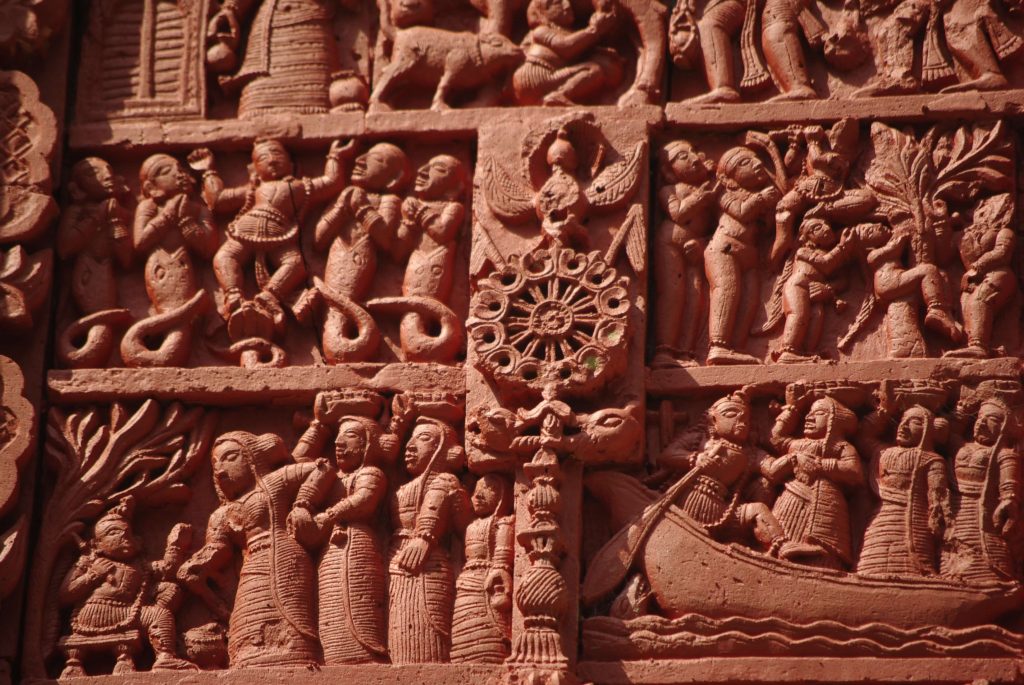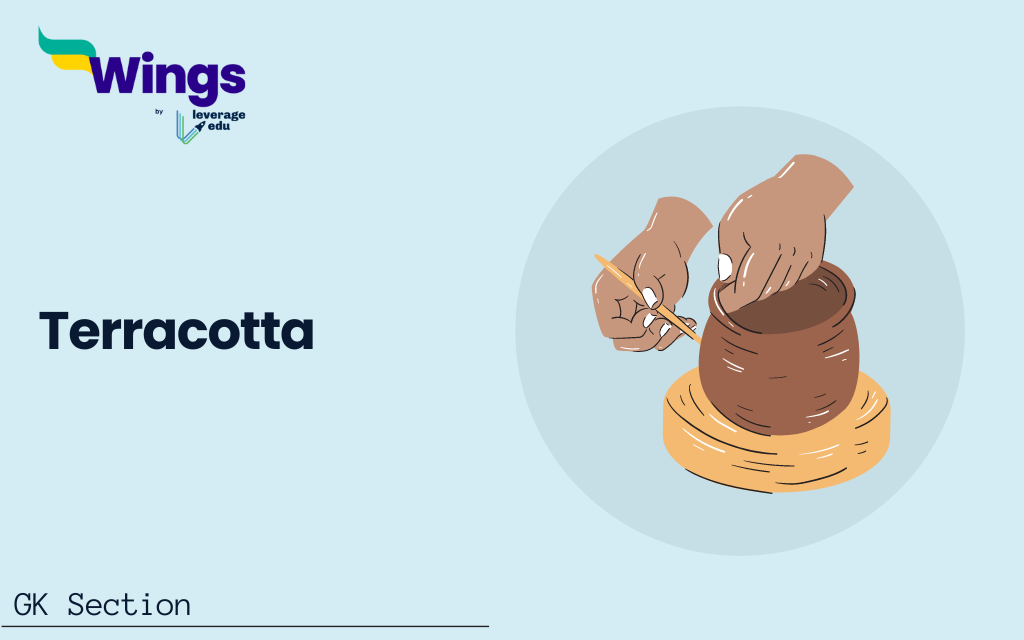The Italian dictionary defines “terra-cotta” as “baked-earth,” or ceramic pottery. It is composed of a porous, rather coarse clay with a high iron oxide content. It is simple to mould terracotta clay into a variety of objects, including planters, vases, culinary utensils, tiling, sculptures, bricks, and more. After shaping, the dried clay is baked at a temperature of approximately 1,000 °C (1,830 °F) in a kiln or over combustible material in a pit; although, in historical and archaeological contexts, the temperature may be as low as 600 °C (1,112 °F). The product’s red colour comes from the glaze that is placed after the baking process, even though the raw clay itself can be any color—brown, maroon, green, or red. This kind of clay is easily located close to the pounds, and the craftsman usually gathers it when the pounds dry out.
Contents
History of Terracotta
The history of terracotta dates back to the prehistoric art period. Three of the most well-known pieces discovered throughout history are The Thinker of Cernavoda (5000 BCE), The Venus of Dolni Vestonice (c. 26,000 BCE), and The Chinese Terracotta Army Warriors (246-208 BCE). It has played a significant role in Greek and Chinese pottery dating back to 7,000 and 10,000 BCE, as well as in Mesopotamian and Egyptian artwork and sculpture. They were also observed in Italian Etruscan art and Minoan art from Crete.

Generally speaking, terracotta was used to create human figures, clay reliefs, god and goddess sculptures, and architectural decorations. Owing to its low weight, it has found widespread application in architecture across the globe.
Also Read: Pithora Painting:Study, Features & More
Types of Terracotta
Types of terracotta used are as mentioned below:
- Terracotta in Red: This type of terracotta is the most commonly used and conventional. Its reddish-brown hue is well-known. Usually, it is fired at a lower temperature without glazing. Red terracotta is frequently used for sculptures, architectural details, and ceramics.
- Terracotta in Black: Blackware is another name for black terracotta. It is produced by heating clay in an atmosphere depleted of oxygen at higher temperatures. The colour produced by this method is dark grey or black. Additionally, ceramics, artwork, and ornamental items are made of black terracotta.
- Glazed Terracotta: The surface of baked clay is coated with glaze to produce glazed terracotta. In addition to adding a layer of protection, glaze comes in a variety of colours and finishes. Common uses for glazed terracotta include architectural features, artistic pottery, and tiles.
- Terracotta Roof Tiles: These roof tiles are made especially for roofing applications. These tiles offer superior insulation, are weather-resistant, and are long-lasting. They give structures a unique character and come in a variety of shapes and sizes.
Uses of Terracotta
Below listed are some of the uses of Terracotta as shown:
Pottery: Pottery made of terracotta is among the most popular applications for this multipurpose substance. Terracotta pottery is well-known for being porous, which allows moisture and air to pass through, making it perfect for plants. This property extends to bigger storage vessels as well as little plant pots. Terracotta pots’ reddish-brown hue gives indoor and outdoor areas, including gardens, a touch of rustic appeal.
Architectural Elements: A lot of materials have been built with terracotta. Because of its strength, capacity to withstand weather, and visual appeal, it may be used with a variety of architectural components. Terracotta tiles are frequently utilised for wall cladding, flooring, and roofing. Additionally, it can be shaped into ornate architectural elements like cornices, balusters, and columns.

Also read: Thangka Paintings: History, Types, Features, Making of Thangkas and Significance
Sculptures and Artwork: Sculptors have long favoured working with terracotta materials. Terracotta clay is used by artists to create elaborate statues, reliefs, and figures. Because of the material’s flexibility, artists may express their creativity and capture minute details. Terracotta’s artistic adaptability is demonstrated by well-known sculptures like the “Dancing Girl” from the Indus Valley Civilization and pieces created by Italian Renaissance artists.
Cookwares: Pots and pans made of terracotta have been used for ages in many different cultures. Terracotta’s porous quality distributes heat evenly, which makes it perfect for slow cooking. Food also acquires a distinct flavour from terracotta. Furthermore, terracotta dinnerware—such as bowls, plates, and Kulhad Cups—brings an earthy element to meals.
Garden and Landscape Design: Terracotta is often used in landscape and garden design. Terracotta gives outdoor spaces a natural and rustic appearance, whether it is used for paving stones, stepping stones, or beautiful garden ornaments and fountains. Its attractiveness in outdoor settings is increased by its capacity to age gracefully and acquire a lovely patina over time.
How to make Terracotta Products
Making of Terracotta products are difficult but not impossible. Below is a refined process of how one can start making the terracotta products using clay:
- Collect clay from surrounding ponds and marsh areas using a spade shovel or by hand. Obtaining the clay solely in its wet state is not required, as this varies depending on the location and its surroundings.
- To make the clay more fluid, some water is added to it. Stir the clay continuously as you add the water to prevent large pieces from forming and to ensure a smooth consistency. It’s time to take a break or let the mixture settle down the clay for a few hours after you reach the liquid surface.
- The potters wheel, the centre of the action, will be the story’s hero. The potter’s wheel will be filled with prepared clay, and it will begin to revolve with the assistance of a stick. We will begin shaping the clay into the desired shape with the aid of your own hands and some deft manoeuvring abilities.
- Wet cloth is used on the exterior shell to create a smooth surface and add texture. The piece is dried for two to three days in sunlight, or in other situations, it is dried inside to prevent excessive drying out or surface cracks, once it has taken on shape and texture.
- To make dried artefacts permanent and hard, they are baked in a kiln or placed over combustible material in a pit. Some people use the ground pits to burn their artwork.
- They stack hay, seaweed, or other combustibles atop the pots. It takes a day or two for the fire to burn all the way through.
- Colors are created in the clay by the chemicals in the grass or other chemicals added to the fire, which are absorbed into the pot. Certain items may be damaged in the process.
Recent Posts
| Mohiniyattam : The Classical Dance of Kerala | Bharatanatyam |
| List Of Foreign Travellers Who Visited India | Miniature Painting |
| List of Indian Classical Dances | Hindustani And Carnatic Music |
FAQs
It is composed of a porous, rather coarse clay with a high iron oxide content. It is simple to mould terracotta clay into a variety of objects, including planters, vases, culinary utensils, tiling, sculptures, bricks, and more.
Your water and curd in terracotta will taste authentic and delightfully refreshing, boosting your virility and metabolism in the process. In addition to the advantages already listed, terracotta is alkaline and porous. It is also beneficial to the health of your heart, and the water in terracotta bottles is easy on the throat.
If clay is consumed orally for an extended length of time, it may not be safe. Low levels of potassium and iron might result from consuming clay over time. In addition, it may result in skin rashes, intestinal blockage, respiratory issues, muscular weakness, and lead poisoning.
This was all about the “Terracotta”. For more such informative blogs, check out our UPSC Exams Section and Study Material Section, or you can learn more about us by visiting our Indian exams page.
 One app for all your study abroad needs
One app for all your study abroad needs














